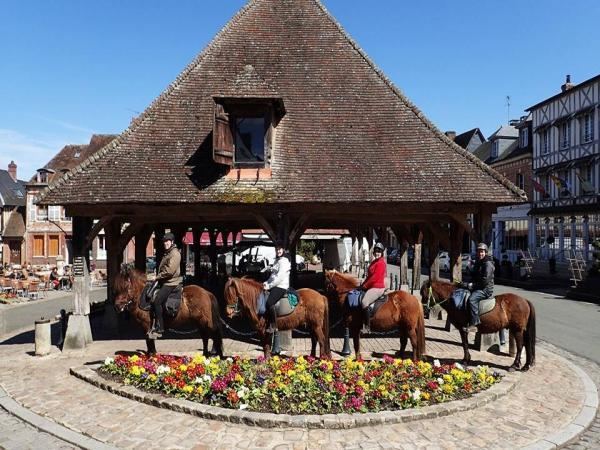Population (2012) 744 Area 26.99 km² | Region Normandy Canton Lyons-la-Forêt Time zone CET (UTC+1) Local time Wednesday 6:26 PM | |
 | ||
Weather 14°C, Wind E at 5 km/h, 65% Humidity | ||
Lyons-la-Forêt is a commune in the Eure department in Haute Normandie in north-western France.
Contents
Map of 27480 Lyons-la-For%C3%AAt, France
Because of its architecture which has been maintained as it was at the beginning of the 17th century, it is also a well-known landmark within the very distinct geophysical and geocultural entity that is the end of Vexin normand and the forest of Lyons around the town is the border with Pays de Bray known for its traditional bocage landscape of woods, orchards and cattle economy.
Geography
Lyons-la-Forêt is located 34 km (21 mi) from Rouen and 28 km (17 mi) from Gisors. Former name: Saint-Denis-en-Lyons.
Lyons was originally the name of the forest < Licontio-/Ligontio-, based probably on the Celtic root lic/lig, that is to find also in the name of the stream running here: la Lieure < Licoris /Ligoris. Same root as the River Loire < Liger and -ley in Beverley (Yorkshire) from Celtic *bibro- *licos > Old English beofor beaver, *licc stream.
History
An early mention of a ducal residence in Lyons can be found in 936, when William I, Duke of Normandy used to stay here.
The castle of Lyons-la-Forêt was constructed at the start of the 12th century by Henry I of England, also known as "Henri Beauclerc". He died there in 1135, supposedly from "a surfeit of lampreys".
The town and the castle were occupied by King Philip II Augustus of France in 1193 but the following year, Richard I of England, back from captivity, obtained the restitution of Lyons; the king of England and duke of Normandy resided frequently here until 1198. In 1202 Philip II Augustus conquered back the city, and after him several French kings sojourned here, attracted by the Lyons forest and the good hunting grounds.
From 1359 to 1398 the castellan domain of Lyons was part of Blanche de Navarre's dower after she became widow of king Philip VI of France. In 1403-1422 it was the dower of Isabeau de Bavière, wife of king Charles. In 1419, in the course of the Hundred Years' War, the English took Lyons.
